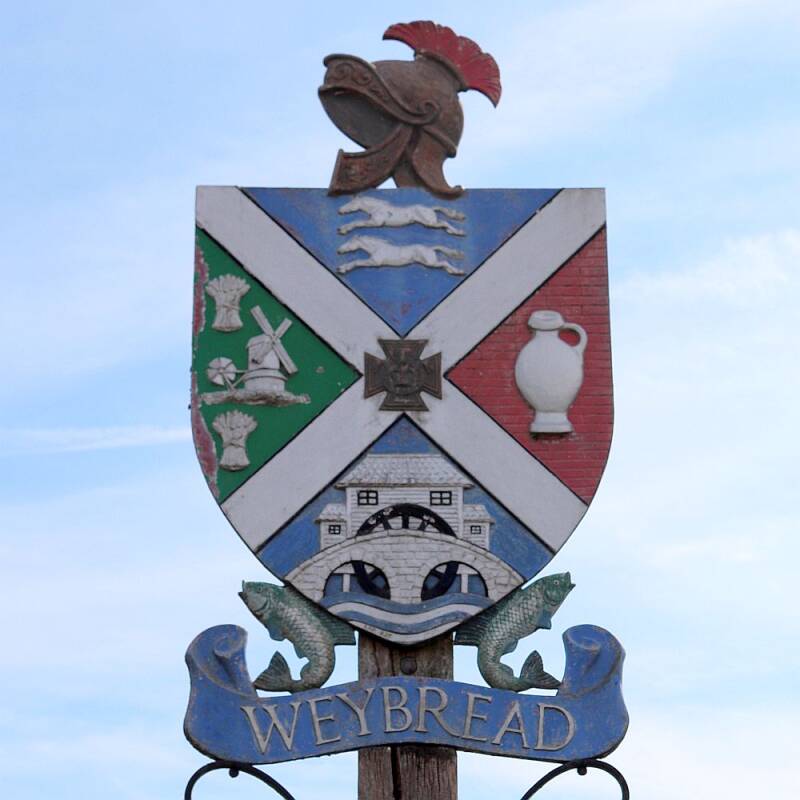Weybread
The Sign
The sign was erected in 1977 to celebrate the Queen's Silver Jubilee, designed by Mr. WR Finch, made by Hector Moore of Brandeston Forge and painted by Roy Pipe.
According to a plaque on the post, the sign represents the following features:
- The helmet relates to the Roman road from Weybread towards Peasenhall.
- The saltire forming the four segments represents St Andrew's church.
- Two horses representing the old racecourse.
- The mill represents one of the tallest mills in Suffolk with corn or wheat which was probably milled there.
- The urn represents the Roman brickworks and Medieval pottery in the area.
- The mill at the bottom represents the largest water mill on the Waveney, now demolished.
- The cross represents Suffolk's first Victoria Cross from Alfred Ablett in the Crimean War.
- The two fish below the shield represent coarse fishing in the Weybread Pits.
The Name and Population
It was called Weibrada, Weibrade in 1086 and Weiebred in 1200. The name means "The broad stretch of land by the road", from Old English (probably referring to the Roman Road). The population was 432 at the 2011 census.
Other Points of Interest
Between Peasenhall and Weybread it is a classic example of Roman road survival, with three very straight separate stretches of modern road (one named Weybread Street) maintaining a rigid alignment for some 9 miles. There is however very little supporting evidence: the two terminii have no known Roman settlements.
On 3 June 2016 Peter and Sylvia Stuart of Brick Kiln Cottage, Mill Lane were reported missing. The body of Peter Stuart was found the same day in nearby woodland. The body of Sylvia Stuart has never been found. Ali Qazimaj, 42, of Tilbury, Essex, was tried, found guilty, and sentenced to 35 years imprisonment for the double murder.
Alfred Ablett VC, DCM ( 3 August 1830 – 12 March 1897) was a British Army soldier and a Crimean War recipient of the Victoria Cross, the highest award for gallantry in the face of the enemy that can be awarded to British and Commonwealth forces. A soldier with the Grenadier Guards during the Crimean War, he was awarded the VC for his actions on 2 September 1855, during the siege of Sebastopol. He was born in Weybread and died in London, his body is buried in St Andrew's church, I believed unmarked, but has a memorial in the church
Weybread St Andrew Round Tower Church

